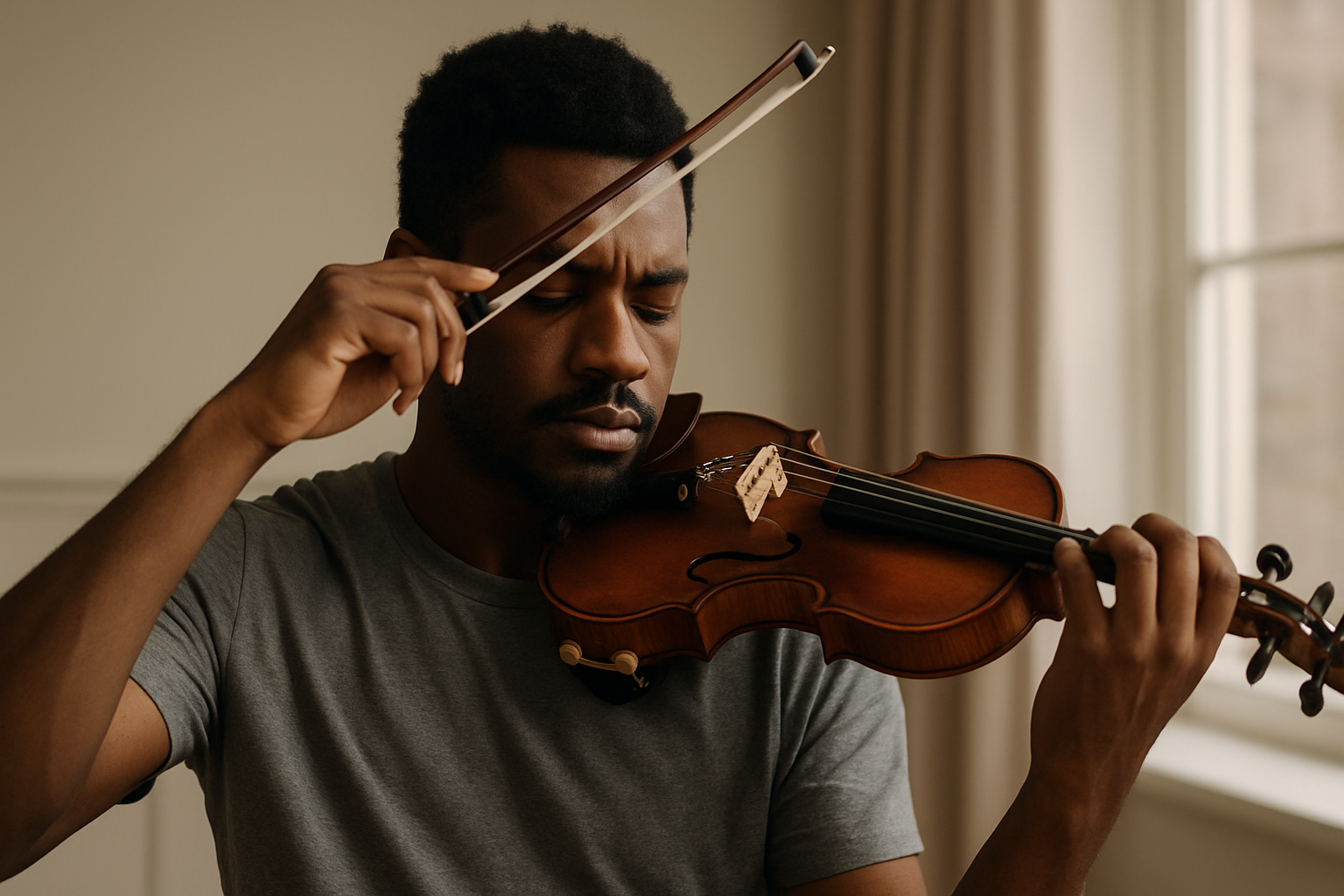When athletes prepare for training, they stretch, jog lightly, or move through exercises to get their bodies ready. Musicians, though not always seen as athletes, use their bodies just as intensively. Fingers, hands, arms, breath, and even the voice are physical tools that require care. Just as running without warming up can lead to injury, practicing music without warming up can reduce performance quality and create long-term physical problems.
In this article, we’ll explore why warming up is essential for musicians, the risks of skipping it, and practical exercises you can use to prepare your body and mind before practice.
Why Warming Up Matters for Musicians
1. Prevents Injury
Playing an instrument is physically demanding. Pianists move fingers rapidly, guitarists stretch across frets, wind players control airflow, and singers use delicate vocal cords. Jumping directly into intense playing can strain muscles, joints, or the voice. Warming up gradually prepares them for the workload.
2. Improves Technique
Warm-ups increase blood flow and flexibility, allowing fingers to move faster, bow arms to glide smoothly, or voices to resonate freely. With proper preparation, technique feels easier.
3. Builds Focus
A warm-up ritual signals to your brain: “It’s time to practice.” Instead of rushing in distracted, you enter practice with calm focus.
4. Enhances Sound Quality
Musicians who warm up often produce clearer tone, steadier rhythm, and better control. The body works more efficiently when prepared.
5. Boosts Confidence
When your hands, breath, or voice feel ready, you approach practice or performance with greater assurance.
The Risks of Skipping Warm-Ups
Many beginners skip warming up because they are eager to dive into songs. But over time, this habit creates problems:
- Tension buildup in shoulders, wrists, or throat.
- Reduced endurance—fatigue sets in faster.
- Slower progress because the body is stiff.
- Increased chance of injuries such as tendonitis, vocal strain, or carpal tunnel syndrome.
Skipping warm-ups may save five minutes now but cost months of recovery later.
General Principles of Warming Up
- Start slowly: Move from simple to complex exercises.
- Stay relaxed: Avoid forcing movements or sounds.
- Focus on posture: Align the body before playing.
- Be consistent: Warm up every time, not just before performances.
Warm-Up Exercises for Different Musicians
For Pianists
- Finger Stretches: Spread fingers gently on a flat surface to loosen joints.
- Five-Finger Patterns: Play C–D–E–F–G slowly, hands separately, then together.
- Scales at Low Tempo: Focus on evenness and relaxation.
- Chord Progressions: Play simple chords softly to wake up muscles.
For Guitarists
- Finger Stretch Across Frets: Slowly place fingers across four frets to improve reach.
- Chromatic Exercises (1-2-3-4): Play each finger in sequence on every string.
- Light Strumming: Strum gently to loosen the picking hand.
- Simple Arpeggios: Warm up both hands by plucking strings one by one.
For Violinists and String Players
- Bow Warm-Up: Play open strings slowly with long, even bows.
- Left-Hand Pizzicato: Pluck strings lightly to activate left-hand fingers.
- Scale Glides: Play scales legato, focusing on smooth transitions.
- Shifting Practice: Slide fingers gently between positions.
For Singers
- Breathing Exercises: Practice diaphragmatic breathing with long exhales.
- Lip Trills: Vibrate lips while humming scales.
- Sirens: Glide voice smoothly from low to high and back.
- Simple Scales on Vowels: Sing “ah” or “ee” softly through scales.
For Wind Players
- Breath Control: Inhale deeply, exhale slowly on a hiss.
- Long Tones: Hold notes steadily, focusing on tone quality.
- Articulation Drills: Play repeated notes with clear tonguing.
- Scale Patterns: Begin slowly, focusing on air support.
For Drummers
- Stick Control: Alternate hands with light taps.
- Single and Double Strokes: Play at low volume before increasing speed.
- Rudiments Slowly: Start with rolls or paradiddles at a comfortable pace.
- Groove Warm-Up: Play a simple beat to activate coordination.
Mental Warm-Ups
Warm-ups are not only physical. Preparing the mind ensures deeper focus:
- Visualization: Imagine yourself playing smoothly.
- Mindful Breathing: Take slow breaths to center attention.
- Positive Affirmations: Replace anxious thoughts with encouraging ones.
How Long Should You Warm Up?
For casual practice, 5–10 minutes may be enough. Before performances or long sessions, 15–20 minutes is ideal. The key is consistency—short daily warm-ups are more effective than long, occasional ones.
Creating a Personal Warm-Up Routine
Your routine should fit your instrument, goals, and body. Here’s a template:
- Stretch (2 minutes): Loosen muscles and joints.
- Breathing (2 minutes): Activate diaphragm and calm mind.
- Technical Exercise (5 minutes): Scales or finger drills.
- Sound Focus (5 minutes): Long tones, chords, or bowing.
With time, adjust exercises based on what your body and music need most.
Long-Term Benefits of Warming Up
- Healthier playing: Reduced risk of injury.
- Better technique: Fingers, breath, or voice respond more smoothly.
- Stronger consistency: Daily warm-ups create reliable preparation.
- Improved focus: You begin each session mentally present.
- Greater expressiveness: A relaxed body communicates emotion more effectively.
Final Thoughts: Warm-Up as the Foundation of Music Practice
Warming up is not wasted time—it’s an investment in your musical future. Just as athletes never compete without preparing their bodies, musicians should never practice without readying their tools: hands, breath, and mind.
A short, consistent warm-up protects your health, enhances your sound, and makes every practice session more effective. Instead of diving into difficult pieces immediately, spend a few minutes connecting with your body and instrument.
Over time, you’ll notice the difference: smoother technique, longer endurance, and a deeper connection with music. In the end, warming up is not just preparation—it is the first step in making music with confidence and joy.
